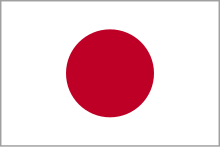User:Machado41/sandbox

Japan Cuisine[edit]
Japanese cuisine has been around since the 17 century. Throughout its history, it was impacted many nations that surround them. Countries like China and Korea influenced Japanese cuisine. As time passed, it even caused a political food craze[1] within Japan. At the same time, it grew and gained tremendous popularity, especially in western countries. What makes Japanese cuisine so special is the diet within the food. Japan has seasonal in, which they make wonderful dishes depending on which season it is.
History[edit]
Japanese food has been changed over time by many southeastern Asian and Western countries like the U.S.A [2]. Has time passed by, their traditional food symbolizes their culture and heritage. The popular dish Ramen had a shortage causing a political food craze in amongst Japan citizens. Ramen has become a staple in Japan, especially amongst the middle-class population. During the postwar of World War II[3], Japan struggled financially which led to a lack of food supplies. Wheat was an important food source for ramen production. In return, many citizens and businesses scrambled as food was scarce. Japan was introduced to rice around 300 B.C. This event has changed and impacted Japanese cuisine. In addition, rice agriculture has been a vital part of Japan's development.
Origin[edit]

Japanese cuisines originated in Edo, now known as Tokyo. The Edo period (1603–1868), which obscured the majestic capital at Kyoto in social generation over the course of the era. It grew fast in recognition due to the increase of industrialism in Tokyo. It states, Japanese cuisine is more of the elevated style of dining, with food prepared and consumed according to aesthetic guideline[4] . Each dish differs from season to season, making them uniquely delicious. Seasonal food[5] is important for society because the diet is based on each season of the year. For instance, In Winter brussels sprouts do best in winter because they enjoy the cold. While in Springs, carrots are available all year long, but spring is the greatest time to eat them. In Summer, lettuce is the ideal season for lettuce. Lastly Autumn, the finest season for squashes like pumpkins. Japanese food changes considerably between seasons, and there is a wide variety of flavors, colors, aromas, and dishes that cultivate the attention of many people
Influence[edit]

Cuisine, like Sushi[6], impacted Japanese culture. Sushi is internationally liked by many countries around Asia, and this cuisine was later inherited by Japan. The Japanese put their own twist on the dish by using their resources, which later grew on their way to every Japanese diet. Another huge influence was rice, as it significantly impacted Japan and many other countries. Rice has been a mainstay of the Japanese diet. thus, Japanese people constantly include rice in almost all dishes. Lastly, Ramen changed the history of Japan's class system. The famous dish called ramen was introduced to Japan from China. This incredible dish caused separation among the Japanese people. Ramen was considered a delicacy for upper-class citizens to enjoy, but it then slowly became affordable to everyone around Japan has time and resources.
References[edit]
- ^ George, Solt (2014-02-22). "The Untold History of Ramen How Political Crisis in Japan Spawned a Global Food Craze". login.eznvcc.vccs.edu. University of California Press. p. 147. Retrieved 2022-10-07.
- ^ Naomichi, Ishige (2001-01-07). "History of Japanese Food". login.eznvcc.vccs.edu. Taylor & Francis Group. p. 63. Retrieved 2022-10-07.
- ^ Hosking, Richard (1997-01-15). "A Dictionary of Japanese Food Ingredients & Culture". login.eznvcc.vccs.edu. Tuttle Publishing. p. 63. Retrieved 2022-10-07.
- ^ Rath, Ericc (2016-11-15). "Japan's Cuisines Food, Place and Identity". login.eznvcc.vccs.edu. Reaktion Books, Limited. p. 34. Retrieved 2022-10-08.
- ^ Rath, Ericc (2010-12-02). "Food and Fantasy in Early Modern Japan". University of California Press. p. 34.
- ^ Naomichi, Ishige (2001-01-07). "History of Japanese Food". login.eznvcc.vccs.edu. Taylor & Francis Group. p. 116. Retrieved 2022-10-08.
